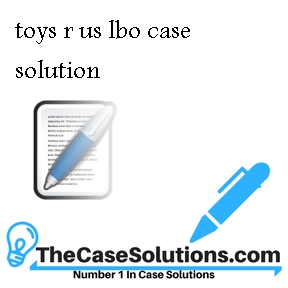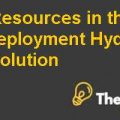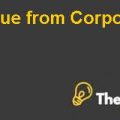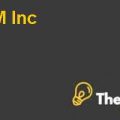Introduction:
Toys “R” Us was a worldwide specialty retailer of toys, baby products, and children’s apparel. As of January 29, 2005, it operated 1,499 retail stores worldwide. These consisted of 898 locations in the United States, including 681 toy stores and 217 Babies “R” Us stores. Internationally, the Company operated, licensed, or franchised 601 stores.
The retail business began in 1948 when founder Charles Lazarus opened a baby furniture store, Children’s Bargain Town, in Washington, D.C. The Company changed its official name to Toys “R” Us in 1957. The first Babies “R” US stores opened in 1996, expanding the Company’s presence in the specialty baby/juvenile market. The Company has got the highest market share and known to be one of the leaders in most of the largest markets in which its retail stores operated, including the United States, the United Kingdom, and Japan.
Leveraged Buyout:
Leveraged buyout can be defined as acquiring a company with taking help from an outside person or any other company. It can also be done through incumbent management with the help of utilizing large amounts of debt to finance the purchase. Many times, these Leverage Buyouts are carried out usually by private equity firms that are experts in these transactions. The primary objective and goal of this concept is to make acquisitions without making huge investment in capital. With the help of this, the company would be able to identify the highest purchase price for an enterprise that a company can pay with the help of debt.
An investment prospect:
To analyze and understand the investment proposal proposed by the club deal consortium, the company needs to perform certain transaction that is as follows.
Initially, the Company will be purchased by the investment seeker in $26.75 per share in $6.7 billion transaction. This amount is 9.9 times the amount of EBITDA in 2005. Along with this, the financing cost of the company would be seven times greater than the EBITDA of 2005. The composition of this debt would be based on cash, new leverage and sponsor equity. Cash would comprise of $1 billion cash, rest of the debt would comprise of $1.07 billion, $1.3 billion of sponsor equity and $4.4 billion of new leverage.
In addition to this, the fees and ownership of the company would divide equally among all the members of the consortium. However, the price that needs to be paid for the whole deal shows more than 122.5% premium on stock price. As a result of this, the main cause of the transaction was the separation of Babies R Us from the business. On the contrary, there was less interest on this segment because of that the management of the company took the decision to sell it off.
Risks and merits of the transactions:
Merits:
One of the major merits of the transaction was that the target company is a main leader in the global toy market. Along with having leading position in the market, the company is expected to have sales growth if the planning and the assumptions made by the company turned out to be successful. In addition to this, the business segment of the company Babies R us is known to be a strong segment but not in a good position right now, therefore, its value could be better as well. Another merit of the company is a strong brand name on the fact that it is successful in maintains its position in the market despite having bad economic situation and bad case scenario in the past. Last but not the least, the international segment of the company is also performing well. Furthermore, the company also owned real estate assets as well that act as a protection for the company in the bad scenarios.
Risks:
As far as the risks are concerned, one of the major risks faced by the company is a high transaction price with having momentous leverage. Furthermore, the company is facing difficulty in making its Baby R Us segment monetized. In addition to this, Toys R Us is facing difficulty in terms of liquidity because that the nature of the business is unpredictable because of its risky and seasonal sales. Last but not the least, the domestic business of the company is in jeopardy because of the factor of age compression and mass merchandising.
Industry dynamics:
The retail industry of toys is at the maturation stage in terms of product life cycle curve. In addition to that, analysts have projected that growth in the industry will be expected to remain stagnant. Sales in the industry are not up to the mark because of the recession in the economy. The demand in the industry is dependent more on disposable income of consumers, economic aspects and changing consumer....................
This is just a sample partial case solution. Please place the order on the website to order your own originally done case solution.
The case mimics the experience of a private investor assessment of the investment potential, which requires the student: (1) identify the risks and advantages of investment in Toys "R" Us, (2) an assessment of the spectrum is returned with multiple operating model scenarios, and (3) identify strategic actions that can be taken to improve the risk / return on investment. The case also discusses the trends and the private equity industry participants. "Hide
by David P. Stowell, Matthew Rhino Source: Kellogg School Management 23 pages. Publication Date: January 1, 2007. Prod. #: KEL168-PDF-ENG














